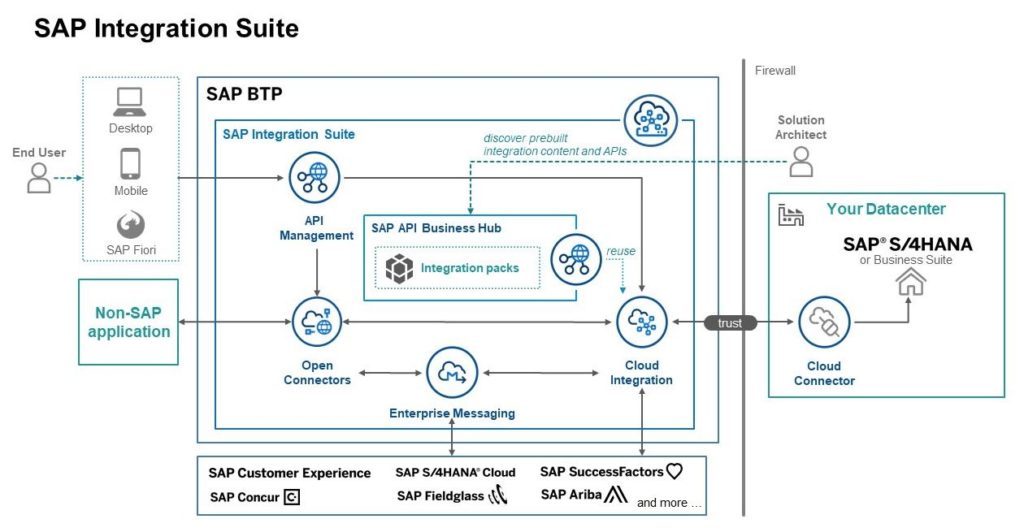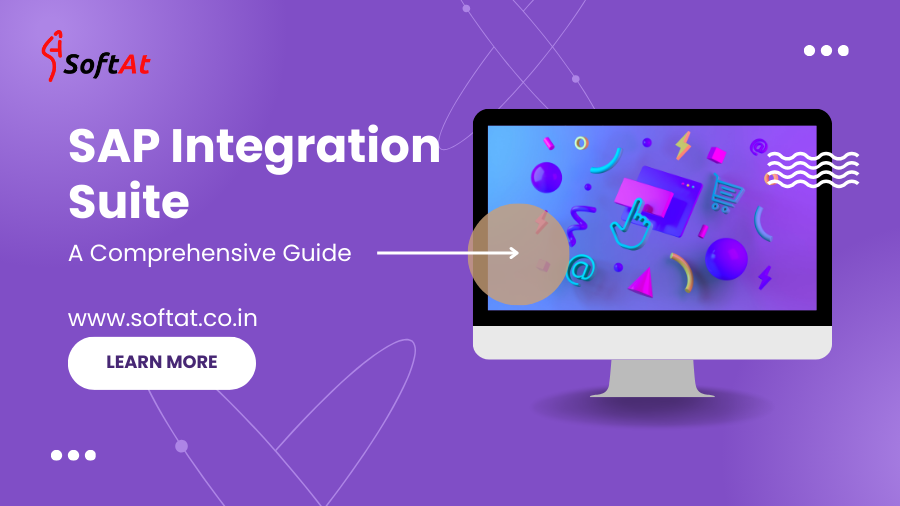In the ever-evolving landscape of digital business, seamless integration has become the linchpin for success. As organizations strive for operational excellence, the role of robust integration solutions cannot be overstated. Enter the SAP Integration Suite, a game-changing platform designed to elevate your business processes to new heights.
Understanding SAP Integration Suite

At its core, SAP Integration Suite is a comprehensive set of tools and services crafted to facilitate seamless connectivity between diverse applications, data sources, and business networks. This suite acts as the digital glue, bringing together disparate systems and enabling them to function cohesively.
SAP Integration Suite offers a wide range of features and capabilities, including:
- Pre-built integration packs: SAP Integration Suite includes a library of pre-built integration packs that can be used to connect common SAP and non-SAP applications. This can save businesses time and money on integration projects.
- API design, development, and management: Integration Suite provides tools for designing, developing, and managing APIs. This allows businesses to expose their data and functionality to other applications and partners.
- Data integration: SAP Integration Suite can be used to integrate data from different sources, including databases, applications, and sensors. This data can be transformed, cleansed, and loaded into other systems for analysis and reporting.
- Process automation: SAP Integration Suite can be used to automate business processes, such as order fulfillment, customer onboarding, and inventory management. This can help businesses to improve efficiency and reduce costs.
API Integration: Bridging the Digital Divide
The Key Components
1. Integration Advisor: Crafting Connections with Ease
At the heart of Integration Suite lies the Integration Advisor. Think of it as your digital translator, effortlessly mapping and transforming data between different systems. With this tool, businesses can bid farewell to the complexities of integration, making the process smooth and efficient.
2. API Management: Empowering Digital Ecosystems
In the digital era, APIs (Application Programming Interfaces) serve as the backbone of interconnected systems. SAP Integration Suite’s API Management component empowers businesses to design, monitor, and govern their APIs effectively. This not only ensures security but also promotes agility in adapting to changing business needs.
3. Process Orchestration: Harmonizing Workflows
Efficient business processes are the cornerstone of organizational success. The Process Orchestration feature in the suite allows businesses to seamlessly integrate and automate workflows, ensuring a harmonious flow of operations. From order processing to supply chain management, this component streamlines it all.
SAP API Development: Bridging the Digital Divide
SAP Integration Suite in Action
Let’s delve into real-world scenarios to understand how SAP Integration Suite proves its mettle:
1. Enhanced Customer Experiences
In a world where customer experience reigns supreme, businesses leveraging Integration Suite can provide a unified and personalized journey for their customers. By integrating customer relationship management (CRM) systems with e-commerce platforms, businesses can gain a 360-degree view of customer interactions, leading to enhanced satisfaction and loyalty.
2. Streamlined Supply Chain Operations
The complexities of modern supply chain management require a robust integration solution. Integration Suite allows organizations to seamlessly connect their inventory management, order processing, and logistics systems. This results in a streamlined supply chain, reducing delays and optimizing resource utilization.
3. Data-Driven Decision Making
In the era of big data, making informed decisions is a competitive advantage. The suite’s Integration Advisor empowers businesses to integrate data from various sources, providing a unified and accurate view. This, in turn, facilitates data-driven decision-making processes, ensuring organizations stay ahead of the curve.
Here are some examples of how SAP Integration Suite can be used:
- Connect SAP and non-SAP applications: SAP Integration Suite can be used to connect SAP applications, such as SAP ERP and SAP CRM, with non-SAP applications, such as Salesforce and Microsoft Dynamics. This allows businesses to create a unified view of their customer data and automate business processes across their different systems.
- Integrate on-premise and cloud applications: Integration Suite can be used to integrate on-premise applications, such as legacy ERP systems, with cloud applications, such as SAP S/4HANA Cloud and SAP Ariba. This allows businesses to migrate to the cloud without disrupting their existing business processes.
- Expose data and functionality through APIs: SAP Integration Suite can be used to expose data and functionality from SAP and non-SAP applications through APIs. This allows businesses to share their data and functionality with other applications and partners.
- Automate business processes: Integration Suite can be used to automate business processes, such as order fulfillment, customer onboarding, and inventory management. This can help businesses to improve efficiency and reduce costs.
The SEO Edge: Outranking the Competition
In the vast digital landscape, achieving a prominent online presence is paramount. Leveraging Integration Suite not only optimizes your business processes but also positions your organization favorably in search engine rankings. The suite’s efficiency, coupled with strategic use of keywords like “SAP Integration,” “Business Connectivity,” and “Digital Transformation,” ensures that your content stands out in search results.
SAP BTP: A to Z of SAP Conversational AI
Conclusion: Navigating the Digital Future with SAP Integration Suite
In conclusion, SAP Integration Suite emerges as a transformative force in the digitalization journey of businesses. From enhancing operational efficiency to securing a competitive SEO edge, this suite is a cornerstone for organizations embracing the future. Embrace the power of seamless integration, propel your business forward, and stay ahead in the dynamic digital landscape.
You may be interested in:
Top Skills Required to Excel as a SAP MM Consultant





